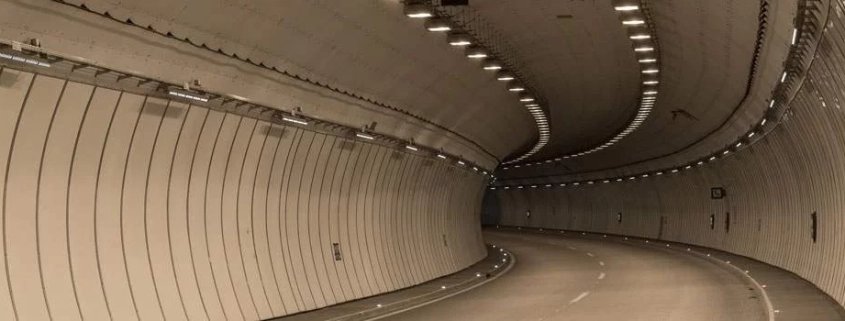Tunnel And Underground Gas Monitoring
Grand Paris project, gas detection in tunnels It is a perfect example of its importance. around Paris transportation network This massive project, aimed at improving and expanding, includes the construction of many new tunnels.
There have been five deaths and several serious accidents since work began, making The Grand Paris Express has once again revealed the major safety challenges at its construction sites. This , gas detection tools , sufficient to security devices and emphasizes the need for continuous employee training .
Workers in these fields toxic and explosive gases And limited working conditions It faces high risks such as . Therefore, to ensure their safety and prevent serious accidents. multi-gas detectors , tracking signs or like OXY SR Self-rescuers are a must.
A confined space is an enclosed volume, and most serious or fatal accidents that occur during work in these environments are related to the presence of explosive, toxic or asphyxiating substances (lack of oxygen). These will be the first risks to be assessed when developing a working procedure for safety with devices for detecting gaseous emissions in tunnels.
Which gases need to be monitored in tunnels?
Chronic exposure to exhaust gases can lead to significant neurological disorders (headache, dizziness, irritability, drowsiness, convulsions), bronchial irritation and sometimes lung cancer. Therefore, in road or railway tunnels mean values (VME) and limit values (VLE) of exposure to detect gaseous products measure and continually monitor It is mandatory:
- Carbon monoxide
- Carbon dioxide
- Nitrogen oxides (nitric oxide and nitrogen dioxide)
- Sulfur dioxide
- Volatile organic compounds (VOCs), including benzene
- lack of oxygen
Sensors for gaseous substances in tunnels
Multiple gas detector and area monitoring sign
personal protection Regarding , multi-gas detector continues to be essential PPE, as does 4-gas detector. You can also secure one or more work areas with field gas monitors to better define the safety perimeter. For very long tunnels, we recommend communication solutions as shown below…
LENS Wireless technology
Particularly suitable for tunnels LENS™ Wireless technology , is a new approach to safety on a construction site. With this solution, a gas detector or field tracking beacon, When an alarm is triggered following a toxic product hazard, a “man in distress” alarm, or a panic situation, all persons in the connected group will immediately know about the danger.
⇒ More about LENS Wireless technology
Gas detection – protection for TBM operators
The most commonly used (and cheapest) model for operations performed in confined spaces It is a portable 4 gas detector (explosive gases, O2, CO and H2S). But if you want to be more relevant for tunnels, you can use CO – CO2 – NO – NO2 – O2 You can choose a multi-gas sensor that is ideally configured to detect cells. Some can monitor up to 6 gases simultaneously. Available in a diffusion version or with a remote sampling pump, this sensor is perfectly suitable for hazardous areas, environments that are potentially explosive, toxic, suffocating or contain VOCs (volatile organic compounds).
One of the most reliable tunnel work transmitters Dräger's X-am 5000 portable detector Dräger's X-am 5000 portable detector personal tracking device, potentially explosive gases and vapors, Detects oxygen deficiency and toxic gas concentrations. Generally clip pump , sampling hose and comes with accessories such as workplace beacon .
To guarantee safe operation, sensors in the tunnel industry need to be checked regularly. Companies find themselves doing a calibration or process to check the operation of that sensor. Equips with crash test station.
Whether in France or Europe, people working in tunnels have masks and detection devices, etc. Respiratory protection equipment must be used.
Area gas monitor – X-zone 5500
X-am 8000 portable multi-gas detector
G7 EXO geolocated area gas monitoring
Field gas monitor – Radius BZ1
Respiratory protection and self-rescue mask
Ocenco's M20.2 Self-rescuing masks, such as , are used in non-breathable, oxygen-poor, highly smoky or extremely toxic environments where the filter device would be ineffective or even dangerous. emergency escape specially designed for are respiratory protection devices . They were originally designed for emergency evacuation during work in mines, large tunnels or confined spaces. They are easy to use and guarantee worker safety.
Escape hood, It is particularly suitable for fire protection in a tunnel. Vapors, particles and toxic industrial gaseous substances It offers 15-minute resistance against and allows users to withdraw from the danger zone, for example during smoke evacuation.strial gaseous substances.
to gas emissions In addition, tunnels are prone to fires, floods, chemical emissions and are places where collapses can occur . Because SCBA equipment Wearing it is not enough. The company responsible for the work must establish a security perimeter and an escape route inside the tunnel is essential. The second should open into a passage under the path leading outside.



